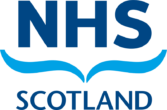SY Trainees
Progress through the SY is monitored regularly by the supervising member(s) of staff, and every three months a formal meeting is held where the trainee is able to summarise what progress they have made through the training plan. This is documented in written form and stored with the trainee records. The SY rotations are governed by a set of competencies for each subject (see example for MRI), and a bespoke training plan is built in order to meet those competencies. If all of the competencies are met then the training should map correctly to GSP. The training plan is put together and agreed by the trainee and the supervisor at the beginning of the SY. Although training progress is benchmarked to the training plan, the very nature of the clinical work in Medical Physics and Clinical Engineering does mean that sometimes priorities can change over the course of the SY duration. If specific changes to the training plan are required then ‘edits’ may be made – subject to the entire training still meeting all of the competencies and providing enough material for the trainee to map their experience correctly to GSP. Example SY training plans can be found via the link.
One aspect of the training that is unique to NHS Scotland is the incorporation of a 3-6 months Innovation Project, to be completed within the specialism training period. This does not have to be conducted in the same subject as the specialism training, although in practice the two are often done within the same training area. The focus of the work is very much ‘innovation’ as opposed to more conventional research and development. The results of the innovation project are written up and incorporated into an NHS Scotland ‘Proceedings’ journal, and the results are presented nationally at a trainee event (usually held in November) which forms a part of the NHS GG&C Department of Clinical Physics and Bioengineering (DCPB) annual meeting.
Approximately 7-8 months before the end of the specialism year, the trainee is expected to complete an ‘Intention to Submit’ (ItS) application to the AHCS. The ItS document is simply an overview of the training journey and consists of two parts; (i) an agreed descriptor of the SMPCETS as agreed by NES (which is copied/pasted as the first section of the application), and (ii) a summary outline of the individual training journey. If this is done appropriately (after supervisor approval and references) then the AHCS will invite the candidate to submit a final written portfolio six months later for STP equivalence assessment by three panel members (lay member, specialism assessor and clinical assessor).
The portfolio that the trainee produces for AHCS STP equivalence assessment is a carefully structured document that provides evidence of training experience to satisfy the standards of Good Scientific Practice (GSP) – which describes a set of professional, scientific, clinical, research and managerial standards by which trainee practice should achieve. The entire training programme needs to be carefully described and evidenced within the portfolio, and each piece of work is mapped to the sub-domains of GSP. The simple guide of ‘describe it, evidence it, and map it’ is often useful for trainees to follow. The AHCS provides excellent guidance on their website on all aspects of the STP equivalence application process. The evidence used can take many forms, but can commonly include the front cover of a scientific report, a standard operating procedure, an email from somebody thanking the trainee for completing a task, the first few slides from a talk, scientific poster etc. There are many other examples. The AHCS is keen that the evidence is included as a ‘snapshot’ – i.e. just highlight a representative section of the work as opposed to the full documents. The portfolio should also demonstrate that the trainee has undertaken reflective practice throughout their training – i.e. it should not consist of a completed ‘tick list’ of tasks from the training plan, but there should be evidence that the trainee has thought carefully about why they have completed a task in a particular way, and potentially how could things be possibly modified or improved. A good way of engaging in reflective practice is to undertake multi-source 360 feedback (MSF), where the trainee asks a series of colleagues for their opinion of them as a clinical scientist via a series of questions. Colleagues who can assist with MSF may be from different departments – e.g. Radiographers, Radiologists, and other Clinicians etc. There are a few other statutory requirements for the final portfolio, such as inclusion of a reflective piece as follows: “Please write a reflective statement of no more than 500 words describing why becoming a Clinical Scientist is important to you and importantly how you have demonstrated that you made the patient your first concern.” Additionally it is important to include the midway QA outcome, and professional references (as provided for the ItS paperwork). Further guidance for AHCS portfolios can be found here.
The individual training centre takes responsibility for confirming that the trainee is considered safe to practice when they submit their equivalence portfolio. This information is gathered via regular meetings between trainee and supervisor to monitor progress against the training plan, observation of practical skills, review of written reports, review of continuous GSP mapping and performance in mock viva assessments. The journey through the hospital-based work is intended to be an evolutionary process, where the trainee initially requires full-time support during the FY but can gradually demonstrate the ability to work more independently as their SY progresses. By the mid- to later stages of the SY, the trainee should be able to work safely and effectively under minimal supervision and be a working asset to the group that they are training with.
